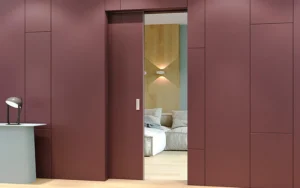Candelabras are more than just functional lighting devices; they are iconic decorative pieces with a rich historical, cultural, and artistic significance. A candelabra is a multi-branched candle holder that can hold two or more candles simultaneously, providing both illumination and elegance. These sophisticated objects have been used for centuries, adorning palaces, religious institutions, and private homes, reflecting the tastes, social status, and craftsmanship of different eras. Over time, candelabras have evolved in style, design, and purpose, incorporating diverse materials, shapes, and sizes. Today, they serve both practical and decorative purposes, enhancing ambiance for formal events, religious ceremonies, and interior design.
This article explores the comprehensive world of candelabras, covering their history, materials, types, design styles, uses, maintenance, and cultural significance. By the end, readers will understand not only how to appreciate a candelabra as an object of art but also how to select and care for one, whether for historical interest, religious practice, or modern interior decoration.
1. History of the Candelabra
The history of candelabras is deeply intertwined with human civilization and the development of artificial lighting. Before the advent of electricity, candles were a primary light source, and multi-branched holders were designed to maximize illumination. The term “candelabra” originates from the Latin word candelabrum, which means “candle holder” or “lamp.”
Ancient Origins
Candelabras date back to ancient civilizations, including Egypt, Greece, and Rome. In these societies, lighting was not only functional but also symbolic. Wealthy individuals and religious institutions used elaborately decorated candelabras made from bronze, silver, and gold to showcase prestige and devotion. Roman candelabras, for example, were often intricately carved with mythological motifs and geometric designs.
Medieval and Renaissance Era
During the medieval period, candelabras became common in castles, monasteries, and cathedrals. They were designed to hold multiple candles to illuminate large spaces such as banquet halls and chapels. Gothic candelabras often featured tall, vertical structures with pointed motifs reflecting the architectural style of the period. In the Renaissance, candelabras evolved into more artistic and decorative objects. Artisans began experimenting with ornate designs, sculptural forms, and mixed metals, making them symbols of refinement and taste.
Baroque and Rococo Influence
In the Baroque and Rococo periods, candelabras reached the peak of opulence. They were made of gilded bronze, crystal, and porcelain, often adorned with elaborate scrolls, floral patterns, and cherubic figures. These candelabras were designed to impress visitors in palaces and stately homes and were used extensively in ceremonial events.
Modern Era
With the invention of electric lighting, the functional necessity of candelabras diminished. However, they retained their decorative appeal and are now commonly used in luxury interior design, weddings, and formal events. Modern candelabras may feature simpler lines, minimalistic designs, or innovative materials while still maintaining the symbolic grandeur of their historical predecessors.
2. Materials Used in Candelabras
Candelabras can be crafted from a variety of materials, each contributing to the overall aesthetic, weight, durability, and cost of the piece. Choosing the right material is essential for both functionality and style.
| Material | Description | Advantages | Common Uses |
|---|---|---|---|
| Brass | Alloy of copper and zinc, often polished or gilded | Durable, classic look, highly decorative | Historical replicas, antique-style candelabras |
| Bronze | Alloy of copper and tin | Heavy, corrosion-resistant, artistic finish | Statuesque candelabras, museum pieces |
| Silver | High-end metal, often sterling | Elegant, reflective, prestigious | Religious ceremonies, luxury decor |
| Crystal / Glass | Transparent or colored crystals mounted on metal frames | Light-reflecting, luxurious, decorative | Chandeliers, tabletop centerpieces |
| Wood | Carved hardwoods, sometimes painted or gilded | Warm, natural look, lightweight | Rustic, vintage, or casual interiors |
| Ceramic / Porcelain | Molded and glazed | Colorful, decorative, versatile | Decorative home candelabras |
| Iron / Steel | Forged or cast metals | Strong, durable, industrial look | Modern, minimalist, outdoor use |
Selecting the material depends on the intended use. For example, crystal or silver candelabras are ideal for formal settings, while iron or wooden ones are better suited for contemporary or rustic interiors.
3. Types of Candelabras
Candelabras vary widely in terms of the number of branches, height, design, and purpose. Understanding the types can help in selecting the right one for specific settings.
| Type | Description | Typical Number of Candles | Common Usage |
|---|---|---|---|
| Tabletop Candelabra | Small, portable candelabras designed for dining tables or side tables | 2–7 | Dinner parties, home decor, intimate settings |
| Floor Candelabra | Tall, free-standing candelabras placed on floors | 3–10 or more | Grand entrances, ceremonial halls, church aisles |
| Wall-Mounted Candelabra (Sconce) | Attached to walls, often ornamental | 1–5 | Hallways, living rooms, churches |
| Single-Arm Candelabra | Minimalist, often modern design | 1 | Accent pieces, small areas |
| Religious / Ceremonial Candelabra | Specifically designed for rituals and worship | Varies (e.g., 7-branched menorah) | Churches, synagogues, temples |
| Tiered / Multi-Level Candelabra | Multiple levels for a dramatic effect | 5–12+ | Ballrooms, wedding centers, grand events |
Some candelabras are adjustable, allowing the user to add or remove candle branches, while others are permanently sculpted for aesthetic purposes. Their design can reflect classical, Gothic, Baroque, Rococo, or contemporary styles, making them highly versatile decorative elements.
4. Design Elements and Styles
The design of a candelabra is central to its appeal. Over centuries, various design elements have emerged, blending functionality with art.
a. Ornamental Features
- Scrollwork and Curves: Common in Baroque and Rococo styles, these intricate designs evoke movement and elegance.
- Floral Motifs: Roses, leaves, and vines are popular decorative patterns.
- Figurative Sculptures: Cherubs, angels, or mythological figures are often integrated into historical pieces.
- Geometric Shapes: Modern candelabras may use minimalistic, angular forms for a contemporary look.
b. Symmetry
Candelabras are traditionally symmetrical, with balanced branches radiating from a central stem. Symmetry contributes to visual harmony and aesthetic stability.
c. Height and Scale
The height of a candelabra affects both its function and visual impact. Tall floor-standing candelabras create dramatic focal points, while small tabletop versions offer subtle elegance. When selecting a candelabra, proportionality with surrounding furniture or space is essential.
d. Finish
The finish enhances the visual appeal of the material. Common finishes include polished metal, matte, brushed, gilded, painted, or antiqued. A well-chosen finish can transform a simple candelabra into a statement piece.
5. Functional Uses of Candelabras
While candelabras are inherently decorative, they serve several functional purposes:
a. Lighting
Before electric lighting, candelabras provided substantial illumination. Even today, in areas without electricity or during special events, they offer ambient lighting that enhances mood and atmosphere.
b. Ceremonial and Religious Functions
Candelabras play an essential role in religious and ceremonial contexts. For example, the menorah is a seven- or nine-branched candelabra used in Jewish traditions, and churches often use candelabras to illuminate altars and sacred spaces.
c. Interior Decoration
In modern interiors, candelabras are primarily used as decorative accents. They can complement traditional, eclectic, or contemporary themes depending on their design and placement. They are often used as centerpiece décor for dining tables, mantels, or sideboards.
d. Event Decoration
Candelabras are popular in event planning, especially for weddings, gala dinners, or formal gatherings. Their ability to combine light and elegance makes them ideal for creating a luxurious ambiance.
6. Candelabra Placement and Styling Tips
Proper placement enhances both functionality and aesthetics:
| Placement Area | Styling Tip |
|---|---|
| Dining Table | Use a tabletop candelabra with an odd number of branches for visual balance; pair with flowers or table linens. |
| Mantelpiece | Medium-sized candelabras can complement artwork or mirrors above a fireplace. |
| Entryway / Hall | Tall floor-standing candelabras create dramatic first impressions. |
| Wedding / Event | Use multi-tiered or crystal candelabras as centerpieces for a luxurious atmosphere. |
| Religious Altars | Ensure visibility and proper lighting; match the candelabra style to ceremonial needs. |
Using complementary candles—white or colored, taper or pillar—can further enhance the effect. Lighting should always consider safety, especially for live candles.
7. Candle Types for Candelabras
The choice of candle affects the ambiance and practicality of a candelabra. Common candle types include:
| Candle Type | Characteristics | Best For |
|---|---|---|
| Taper Candle | Long and thin, classic look | Formal dinners, ceremonies |
| Pillar Candle | Thick and cylindrical, stable | Floor or multi-arm candelabras |
| Votive Candle | Small, short, often in holders | Tabletop accent |
| LED Candle | Flameless, battery-powered | Safety-conscious areas, long-duration events |
| Floating Candle | Usually for decorative bowls or trays | Event decor and centerpieces |
Candle size and type should complement the candelabra design, ensuring proportionality and balance.
8. Maintenance and Care
Maintaining a candelabra ensures longevity, functionality, and aesthetic appeal:
- Cleaning: For metal candelabras, use a soft cloth to wipe dust and polish with appropriate metal cleaners. Crystal and glass candelabras can be washed carefully with mild soap and water.
- Wax Removal: Remove candle drips by gently heating the wax with a hairdryer and wiping with a soft cloth or using freezing techniques to chip it off.
- Candle Replacement: Always replace used candles with those of the same size to maintain symmetry.
- Storage: Store candelabras in a dry, dust-free environment, preferably covered to prevent tarnishing or damage.
- Safety Checks: For live candles, ensure stable placement and avoid placing candelabras near flammable objects.
9. Cultural Significance
Candelabras are not merely decorative objects; they hold cultural and symbolic significance:
- Religious Rituals: The menorah in Judaism symbolizes enlightenment and divine presence. In Christianity, candelabras illuminate sacred altars and are used in liturgical practices.
- Symbol of Status: Historically, elaborate candelabras were symbols of wealth and social rank, displayed prominently in palaces and aristocratic homes.
- Artistic Expression: Many candelabras reflect the artistic trends of their era, serving as both functional and sculptural pieces.
10. Cost and Value Considerations
The price of a candelabra depends on material, craftsmanship, size, and age. Antique candelabras made from silver or bronze can be extremely valuable. Contemporary decorative candelabras vary from affordable mass-produced versions to high-end designer pieces.
| Candelabra Type | Price Range (USD) |
|---|---|
| Antique Silver / Bronze | $500 – $10,000+ |
| Crystal Tabletop | $50 – $500 |
| Brass / Decorative | $100 – $800 |
| Modern Minimalist | $30 – $300 |
| Event / Wedding Rentals | $20 – $100 per piece |
Collectibility, historical significance, and material quality heavily influence the market value.
11. Modern Innovations
Modern designers have introduced innovations in candelabra design:
- LED and Electric Versions: Flameless candles or electric candelabras for safety.
- Modular Designs: Adjustable branches for customization.
- Mixed Materials: Combination of metal, glass, and wood for contemporary appeal.
- Sustainable Materials: Eco-friendly metals, recycled glass, or biodegradable candle holders.
These innovations make candelabras versatile for modern lifestyles while preserving their classic elegance.
Conclusion
A candelabra is a timeless object that combines utility, art, and symbolism. From its ancient origins to its modern reinterpretations, it has evolved into a versatile centerpiece that enhances lighting, décor, and ceremonial significance. Whether crafted from bronze, crystal, or wood, candelabras remain a symbol of elegance and sophistication, reflecting both cultural heritage and artistic expression. Selecting the right candelabra involves understanding its material, design, placement, and candle type, ensuring that it complements the space while maintaining functional value. By appreciating its history, design intricacies, and cultural importance, one can fully enjoy the unique blend of beauty and utility that a candelabra offers.
Frequently Asked Questions (FAQs)
1. What is the difference between a candelabra and a candlestick?
A candlestick holds a single candle, whereas a candelabra has multiple branches for holding two or more candles simultaneously.
2. Can I use LED candles in a candelabra?
Yes, LED or battery-operated candles are safe alternatives for candelabras, especially for events or indoor use.
3. What materials are best for antique-style candelabras?
Bronze, brass, and silver are traditional materials for antique candelabras, valued for durability and intricate detailing.
4. How do I clean wax from a candelabra?
Use gentle heat or freezing methods to remove wax, followed by soft cloth cleaning and polishing appropriate to the material.
5. Are candelabras still relevant in modern interiors?
Absolutely. Candelabras add elegance, ambiance, and artistic value, making them popular in contemporary homes and events.









